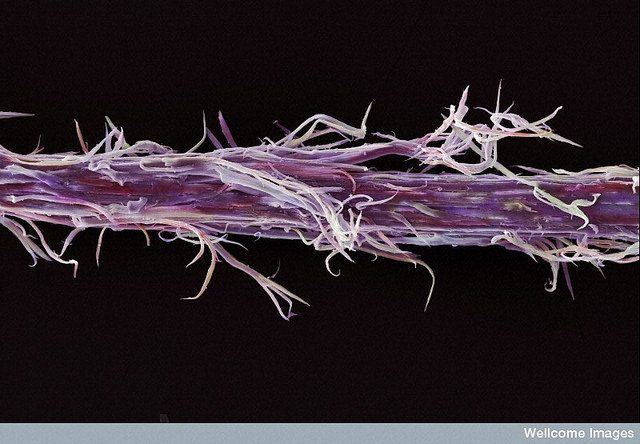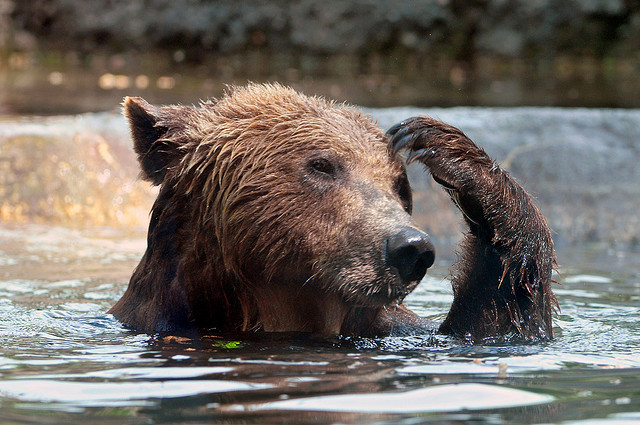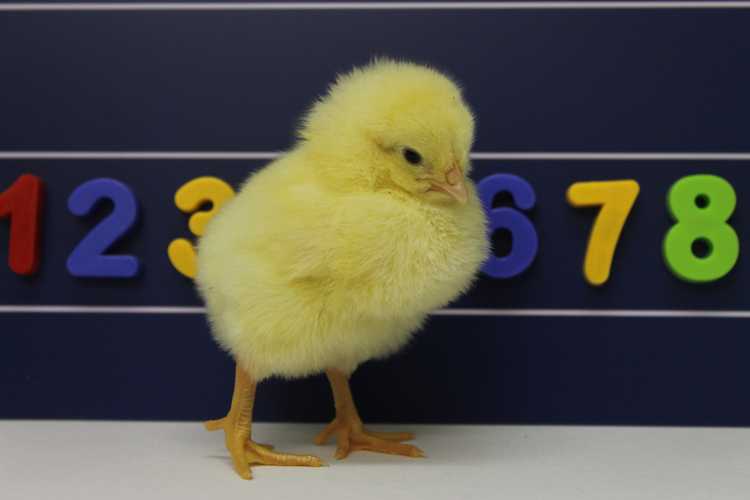
An exercise in communicating science results, by @neuroamanda and @RaoOfPhysics
© 2015-2016 — Amanda Alvarez and Achintya Rao. CC BY-NC 4.0
Jekyll theme: Lanyon

But permanent waving does alter protein structure inside hair
Miracle products for fussy hair have probably been around longer than hair has even been studied. Though hair structure has now been investigated in great detail, with tools like X-ray diffraction and electron microscopy, hair repair products proliferate, and their benefits can be dubious at best. Beyond settling this cosmetic question, however, studying hair with imaging methods can be instructive for science — and health. Abnormally curly or twisted hair can actually be indicative of an underlying disease state; breast cancer, for example, can be accurately predicted using hair samples. Disease screening thus might benefit from hair imaging, but it’s only useful to study hair if the frequently used hair care products — shampoo, conditioner, and permanent waving treatments — don’t affect internal hair structure.
read more…
Variation of whale-song pitch not fully explained by Doppler shift
Whale songs, the deep, reverberating vocalisations made by the largest mammal, have been the subject of research for decades. Recordings of the songs of the Antarctic blue whale show a pronounced drop in pitch between March and December before a “reset” over the following January and February. In addition to this intra-annual variation, the recordings also show an overall drop in pitch over several years. Several hypotheses have been proposed to explain both patterns. Marine biologists recently took to the oceans to test explanations for the intra-annual variation, including the idea that the changes could be caused by Doppler shifts.
read more…
Broad network of brain areas mediates the satisfaction of scratching
The act of scratching not only relieves an itch but also evokes pleasant feelings. These feelings of enjoyment can be traced to activation in regions of the brain involved in reward, or positive stimulation that reinforces certain behaviors. While the pleasantness of scratching an itch has been documented before, a 2014 study claims to be the first to identify the specific brain regions involved in this sensation.
read more…
Foraging for food takes precedence over staying cool
Grizzly bears have a dilemma. They only have about seven months a year to eat 12 months’ worth of food, since they hibernate for the remaining five months. This imperative to eat is at odds with high temperatures during the best feeding months. Bears don’t have sweat glands, yet they must develop thick under-fur and a layer of fat for the winter. Do the bears reduce their activity to beat the heat, or do they stick to their eating mission?
read more…
Judgment of number influenced by other magnitudes and senses
People appear to have an inherent bias when it comes to number. They tend to count from left to right and are quicker to react in psychological tests when smaller numbers are on the left and larger numbers are on the right; chicks also display this same behavior. Studies have found this mental number line to be pervasive across tasks where people judge size, duration or emotional expression (preferring frownies on the left and smileys on the right, for example). But is the mental number line just about number or is it part of a more general system that extends to any judgment of magnitude?
read more…